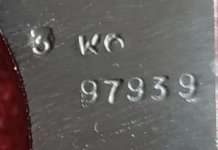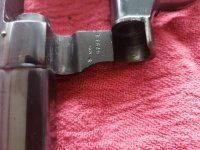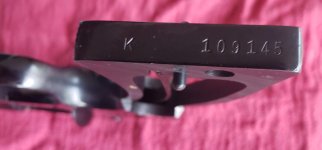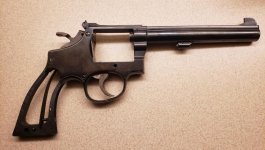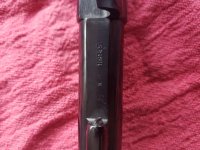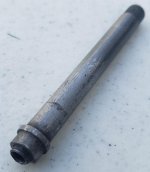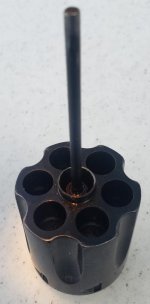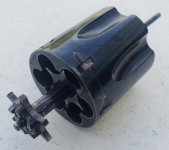Ralf Walt
Member
I read the thread on finding the model number for a revolver that doesn't have it inside the yoke. I'm guessing it's a model 14 but not sure.
Here is my info:
type: hand ejector
serial number: K 109xxx
S/N on the front gripstrap: no
right side of barrel: "38 S&W SPECIAL CTG"
left side of barrel: "SMITH & WESSON"
barrel length: 6 in
sights: adjustable
strain screw: yes
butt swivel: no
lanyard ring: no
screws: 5 (4 plus 1 trigger guard screw)
see images for numbers on frame under yoke
The threaded part of the ejector rod has broken off inside the cylinder. Any ideas on how to extract it?
Thanks
Here is my info:
type: hand ejector
serial number: K 109xxx
S/N on the front gripstrap: no
right side of barrel: "38 S&W SPECIAL CTG"
left side of barrel: "SMITH & WESSON"
barrel length: 6 in
sights: adjustable
strain screw: yes
butt swivel: no
lanyard ring: no
screws: 5 (4 plus 1 trigger guard screw)
see images for numbers on frame under yoke
The threaded part of the ejector rod has broken off inside the cylinder. Any ideas on how to extract it?
Thanks
Attachments
Last edited:

